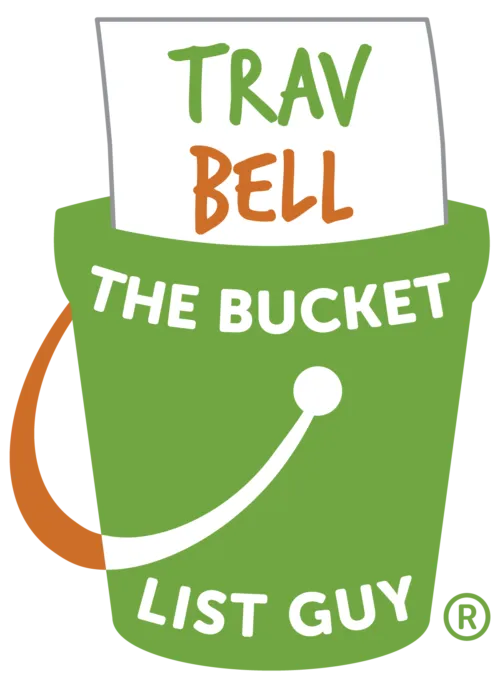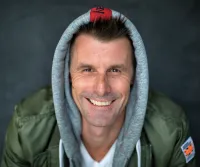LATEST BLOG POSTS

The Power of Doing the Opposite: Can You Get the Results You Want by Reversing Your Actions?
A lot of my Coaching is getting clients to do the opposite to what they've always done! Because, if you do the opposite actions, you should theoretically achieve the opposite results, right?
We often find ourselves stuck in patterns that don’t yield the results we want in life. What if, instead of tweaking these actions, we did the exact opposite? In relationships, money, health, business, leadership, and parenting, this counterintuitive approach can be a powerful tool for transformation. But how realistic is it to expect that doing the opposite will produce different results? Let’s explore this idea across multiple areas of life.
The Theory of Opposite Actions
The concept of "opposite action" is rooted in psychological theories, particularly in Cognitive Behavioral Therapy (CBT). Albert Ellis, a pioneer of CBT, suggested that by acting opposite to our unhelpful behaviors, we could break negative patterns and produce positive change. But what happens when we apply this principle to broader areas of life, such as our relationships or finances?
Relationships
In relationships, we often fall into repetitive patterns of behavior that hinder intimacy, trust, or communication. For example, someone who avoids confrontation might allow resentment to build over time, damaging the relationship. By choosing to address issues head-on—doing the opposite of their typical avoidance—they might resolve underlying tensions and improve the connection.
In The Seven Principles for Making Marriage Work by John Gottman, he discusses how couples who break unhealthy cycles of communication are more likely to succeed in long-term relationships. For instance, instead of withdrawing during an argument (which often escalates the issue), one might choose to engage and communicate openly, even though it feels uncomfortable.
Case Study:
A study published in The Journal of Family Psychology found that couples who engaged in "opposite action" by expressing vulnerability during conflicts, rather than retreating or attacking, reported greater satisfaction and emotional intimacy in their relationships. Doing the opposite—being vulnerable instead of defensive—helps relationships thrive.
Money
When it comes to money, we often behave in ways that are counterproductive to building wealth. For example, many people spend impulsively or save only what's left over after expenses, leading to financial instability. Doing the opposite—prioritizing saving or investing before spending—can dramatically change financial outcomes.
The Richest Man in Babylon by George S. Clason advocates for paying yourself first, a principle that requires doing the opposite of most people's spending habits. By reversing the tendency to spend first and save later, you can grow wealth consistently.
Case Study:
A study by the National Bureau of Economic Research found that people who automatically diverted a portion of their income to savings accounts increased their financial stability. By doing the opposite of the usual "spend-then-save" mindset, they were more likely to meet long-term financial goals.
Health
In health and wellness, our instincts can sometimes lead us astray. For instance, when we feel stressed or overwhelmed, the natural response is to avoid exercise or comfort ourselves with unhealthy food. However, doing the opposite—moving your body or eating healthfully during stressful times—can significantly improve physical and mental well-being.
Atomic Habits by James Clear emphasizes the importance of small, opposite actions that counter unhealthy habits. If you typically avoid working out because you're tired, try doing a light, energizing workout instead. Often, it’s the opposite action that provides the energy and mood boost you’re missing.
Case Study:
Research in the journal Psychoneuroendocrinology shows that exercise, even when participants felt fatigued, improved their overall energy and reduced cortisol levels (the stress hormone). This is a classic example of how doing the opposite—exercising when you feel too tired—can lead to better health outcomes.
Business
In business, many leaders tend to stick with what worked in the past, even when it’s no longer effective. This is known as the "status quo bias," and it can lead to stagnation. Doing the opposite—taking risks, innovating, and embracing change—can lead to new opportunities and growth.
The Innovator’s Dilemma by Clayton Christensen explores how businesses that fail to innovate (i.e., do the opposite of maintaining the status quo) often fall behind. In contrast, those that take bold, opposite actions, such as investing in disruptive technologies, are more likely to thrive.
Case Study:
A study in Harvard Business Review revealed that companies that encouraged employees to challenge the status quo and take calculated risks experienced more significant growth and innovation. Leaders who did the opposite of maintaining comfort zones led organizations that were more adaptable and competitive.
Leadership
Traditional leadership models often focus on exerting control and authority. However, studies suggest that leaders who do the opposite—empowering others, sharing decision-making, and leading with vulnerability—are more successful in building strong teams.
Brené Brown, in her book Dare to Lead, argues that vulnerability in leadership is a powerful tool. Instead of projecting invulnerability (which is a common instinct), leaders who embrace vulnerability build trust and inspire their teams to follow them wholeheartedly.
Case Study:
Research published in The Leadership Quarterly shows that leaders who practiced servant leadership—where the leader’s primary role is to serve their team, rather than control them—had teams that were more engaged, innovative, and productive. Doing the opposite of authoritative leadership fosters stronger team dynamics and greater success.
Parenting
Many parents instinctively react to a child’s misbehavior with punishment or strict discipline. But research suggests that doing the opposite—responding with empathy and understanding—often yields better long-term outcomes.
In The Whole-Brain Child by Daniel J. Siegel and Tina Payne Bryson, the authors emphasize how connecting with children on an emotional level before correcting their behavior leads to better results. This counterintuitive, opposite approach nurtures emotional intelligence and cooperation in children.
Case Study:
A study published in Developmental Psychology found that parents who used empathy-driven discipline (the opposite of punishment-driven methods) had children with higher emotional regulation and fewer behavioral issues. The opposite action fosters a more secure and cooperative relationship.
When "Opposite" Doesn't Work
While the "do the opposite" strategy can be transformational, it’s not a magic bullet. Some areas require more nuanced approaches, where drastic opposites may not yield the best results.
1. Complex Problems
In some situations, such as complex personal struggles or deep-rooted financial issues, simply doing the opposite may oversimplify the problem. These situations often require a balanced, thoughtful approach instead of swinging to the other extreme.
2. Balance Over Extremes
It’s essential to recognize when doing the opposite might just lead to another extreme. For example, going from excessive spending to extreme frugality can cause undue stress and resentment. Balance is often more effective than extremes.
Conclusion: Should You Do the Opposite?
The idea of doing the opposite can be an effective strategy in breaking negative patterns, whether in relationships, money, health, business, leadership, or parenting. It’s a way to disrupt cycles that no longer serve you and make room for new possibilities. However, it’s crucial to apply this principle with intention and awareness, recognizing when subtle adjustments might be more effective than radical reversals.
By selectively using the power of opposites in areas where you’re stuck, you can open the door to greater success, fulfillment, and well-being across many aspects of life.
Further Reading:
- The Seven Principles for Making Marriage Work by John Gottman
- The Richest Man in Babylon by George S. Clason
- Atomic Habits by James Clear
- The Innovator’s Dilemma by Clayton Christensen
- Dare to Lead by Brené Brown
- The Whole-Brain Child by Daniel J. Siegel and Tina Payne Bryson

